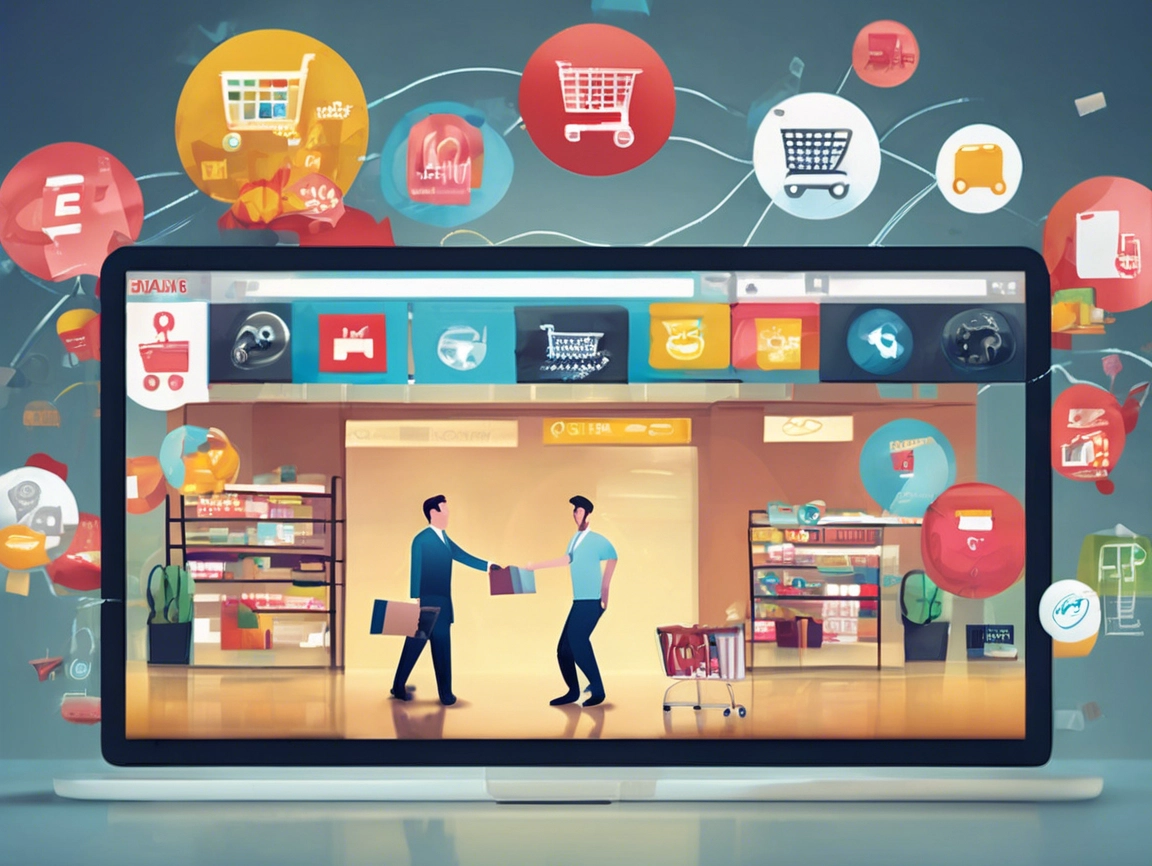
The world of commerce has seen an immense transformation over the past few decades, with e-commerce at the forefront of this change. From small businesses to global enterprises, e-commerce has revolutionized the way products and services are bought and sold. In this blog, we explore the incredible potential of e-commerce, its benefits, challenges, and how businesses can harness its power for growth and success.
What is E-Commerce?
E-commerce refers to the buying and selling of goods and services over the internet. It encompasses various business models, including Business to Consumer (B2C), Business to Business (B2B), Consumer to Consumer (C2C), and Consumer to Business (C2B). Through e-commerce, businesses can offer their products or services to a global audience, breaking down geographical barriers that were once significant obstacles to expansion.
Whether through online stores, mobile apps, or digital marketplaces, e-commerce allows businesses to reach customers 24/7, providing convenience for consumers and new opportunities for businesses.
The Growth of E-Commerce
The global e-commerce market has grown exponentially in recent years. With the rise of digital technology, mobile devices, and internet access, more people are shopping online than ever before. According to recent statistics, global e-commerce sales are expected to surpass $5 trillion by the end of 2023.
Several factors contribute to the growth of e-commerce:
Increased Smartphone Usage: Mobile commerce (m-commerce) is on the rise as consumers increasingly use smartphones to shop online.
Global Connectivity: The availability of high-speed internet and improved delivery logistics has made it easier for consumers to shop from anywhere in the world.
Changing Consumer Behavior: Shoppers are now seeking convenience, personalized experiences, and faster delivery options, making e-commerce an appealing option for both businesses and consumers.
The Benefits of E-Commerce for Businesses
E-commerce offers a range of benefits for businesses, regardless of their size. Some of the key advantages include:
Global Reach: With e-commerce, businesses are no longer limited by physical location. They can sell to customers all over the world, expanding their customer base and boosting revenue potential.
Lower Operating Costs: Operating an online store typically involves fewer overhead costs compared to running a physical storefront. There’s no need for renting or maintaining a physical space, and inventory management can be streamlined with digital tools.
24/7 Availability: An online store never closes. Businesses can continue to make sales around the clock, catering to a global audience across different time zones.
Personalization and Customer Insights: E-commerce platforms provide businesses with valuable data on consumer behavior, helping them tailor their offerings to meet the unique needs and preferences of customers. Personalization can include product recommendations, personalized emails, and tailored discounts.
Better Inventory Management: With e-commerce tools and integrations, businesses can efficiently manage inventory and reduce the risk of overstocking or understocking.
Customer Convenience: Online shopping offers consumers the convenience of shopping from anywhere, at any time. With features like product search, customer reviews, and easy payment options, e-commerce enhances the overall shopping experience.


Challenges Faced by E-Commerce Businesses
Despite its many advantages, e-commerce also comes with its share of challenges. Businesses must navigate these hurdles to achieve sustainable success:
Security Concerns: As more transactions are conducted online, security becomes a major concern. Data breaches, credit card fraud, and identity theft can undermine consumer trust in an e-commerce business.
Intense Competition: The e-commerce market is highly competitive, with many businesses vying for attention. Differentiating your brand and offering unique value propositions is essential to stand out.
Logistics and Delivery: Timely and efficient delivery is a key part of the e-commerce experience. Issues such as delayed shipments or damaged products can negatively impact customer satisfaction.
Managing Customer Expectations: E-commerce businesses need to ensure a seamless shopping experience. Customers expect quick responses, hassle-free returns, and personalized services, which can be challenging to maintain as businesses scale.
Website Optimization: An intuitive, fast, and mobile-friendly website is crucial for converting visitors into customers. Ensuring a smooth user experience, from browsing products to completing checkout, is essential for success.
How E-Commerce is Revolutionizing Industries
E-commerce has impacted a wide range of industries, offering innovative solutions for businesses to connect with customers in new ways. Some key sectors that have been transformed by e-commerce include:
Retail: E-commerce has revolutionized the retail industry, enabling small businesses and large enterprises alike to reach customers directly. Platforms like Shopify, WooCommerce, and BigCommerce make it easy for retailers to set up online stores and manage inventory.
Food Delivery: Online food delivery services such as UberEats and DoorDash have revolutionized the restaurant industry, providing customers with quick access to their favorite meals from the comfort of their homes.
Travel and Hospitality: Booking flights, hotels, and car rentals online has become the norm. E-commerce has made it easier for travelers to compare prices and book services instantly through platforms like Expedia and Booking.com.
Financial Services: Online banking, investing, and insurance services have streamlined financial services, making them more accessible to a broader audience. Consumers can manage their finances with ease via platforms like PayPal, Venmo, and Robinhood.
The Future of E-Commerce
The future of e-commerce looks promising, with technology continuing to drive innovation. Some key trends to watch in the coming years include:
Voice Commerce: With the rise of smart speakers like Amazon Echo and Google Home, voice-activated shopping is gaining popularity. Customers can place orders using voice commands, making shopping even more convenient.
Augmented Reality (AR): AR is transforming the way customers shop online. By using AR, consumers can virtually try on clothes, view products in their homes, or visualize how a product works before making a purchase.
AI and Personalization: Artificial intelligence is revolutionizing e-commerce by enabling businesses to offer hyper-personalized experiences, from product recommendations to dynamic pricing.
Social Commerce: Social media platforms like Instagram, Facebook, and Pinterest are increasingly becoming shopping destinations. With integrated shopping features, businesses can sell directly through these platforms, creating seamless shopping experiences for consumers.
Subscription Models: Subscription-based e-commerce businesses, like Dollar Shave Club and Birchbox, are gaining popularity due to their convenience and customer loyalty incentives.


